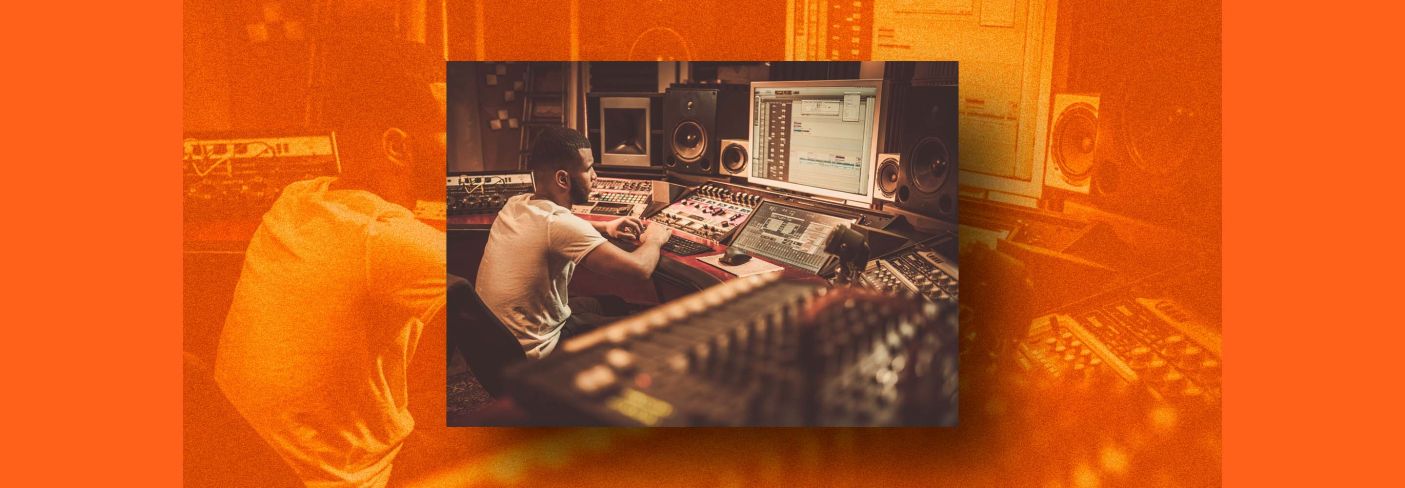
How to mix a song from start to finish
Learn how to use iZotope Music Production Suite to mix your songs from start to finish, with expert tips and tricks.
You’re at square one, staring at a session of unmixed tracks. There’s much to do, from gain staging and unmasking the kick and bass, all the way to mixing vocals. Where do you go from here? In this tutorial, learn how to mix your track from start to finish, and even get a rough master ready – all with core mixing and mastering tools like


Neutron


Ozone Advanced
Follow along with this tutorial using all of the intuitive mixing tools included in iZotope


Music Production Suite 7
1. Listen to your rough mix and get your references in order
Whether you produced the track or not, play the song from start to finish and write down some goals, thoughts, inspirations, or anything else pertinent to the song while you listen. You want to put on your mixer’s hat and familiarize yourself with the material, and listening from top to tail is the best way to do so.
Mixing a song from start to finish is easiest when we have set goals in mind from the outset – so don’t skip this step!
After you've listened to your song, take a listen to the reference tracks that you want to inspire your mix. Take some notes on the way your references sound. You'll need them later!
For instance, here are some tracks I was given for a really fun song called “Shadow.”
The final mix wound up sounding like this, but I thought we’d take the first verse and chorus from the beginning for this article. These sections represent what you might work with at the beginning of your career: It was recorded well but not perfectly, and the acoustic instruments generally need the most amount of care in mixing, whereas sampled stuff has been “pre-mixed” by the manufacturer.
I pretend the previous mix doesn’t exist and listen to the ruff I was given.
I also determine my references – songs that inspire me for this tune, songs I always use when referencing, and the bands’ own choices for reference material.
They gave me more “emotional inspirations” than sound-alikes, so I ran the idea of a “Tame Impala” vibe by them, which they approved.
Now that we’ve got our start, on to our next phase.
2. Organize, gain stage, and balance your mix
If you want to move quickly and keep focused, you have to stay organized.
Everyone has their own way of doing this, but here’s what I recommend:
Organize your tracks and color code them.

Gain stage your tracks in some manner that preserves headroom.
Folks, I’ve spent a lot of years on gain staging. I’ve used a whole bunch of different approaches and wasted time on cockamamie schemes.
I’ve done the hard work of stumbling through the countless misconceptions of gain staging – which means you don’t have to!
The simplest and easiest way to gain stage your mix:
Play the tracks as you have them, and look at your main output meters. Is it clipping (hitting or going above 0 dBFS)? If not, is it way too close to clipping (constantly peaking around -3 dBFS or higher)?
If the answer to either question is yes, simply select all the regions, items, or whatever your DAW calls the visual representation of your audio, and clip-gain them all down till the mix comfortably hovers around -18 lufs or -18 RMS (your preference). -18 is what I use because a lot of analog emulations default to 0 dB VU = -18 dBFS. You can go higher if you want (say -14) or lower (-23). Don’t go too high or too low.
Observe this wordless video:
At the end of this video, you’ll note I turned the vocals down independently from the music. They were way out in front, so I made a judgment call that takes us neatly into our next item on our list:
Put up a static mix to start with. You can also use the Balance Assistant in Neutron’s Visual Mixer to get started. Read through the tutorials above to get a good grasp of these concepts. Once you've reviewed them and applied them to your mix, we'll begin step three.
My static mix will sound like this:
3. Listen to your rough mix and sketch out some goals
Take a minute to listen to your static mix and sketch out some rough goals.
For instance, I listen to this mix and I think: the bass is too loud and flubby, the whole vibe doesn’t feel dreamy and floaty enough, and the guitars are a little tinny in the high mids. I also think about how the pre-chorus needs to blast off into space with some fun modulation and time-based effects.
Goals in mind, I’m going to work on drums and bass first, and go from there.
4. Mix your drums
Many engineers start with their drums. This makes sense, as drums are a foundational instrument in almost any production.
I like to spotlight the drums first, but I’ll keep the other instruments in at a slightly lower volume:
Now it’s time to start working.
We’ve already listened to the static mix. We have some broad goals for the mix, and now we need to chart out some specific goals for the drums. Think about questions like:
- What do I want to get out of these drums?
- What is bothering me about these drums?
- What’s missing in these drums?
- How do I want these drums to change from section to section?
Write down the answers for yourself. Answers can be general (“the drums need to smack more”), or specific (“there’s too much muddy resonance in the floor tom”).
Whatever you do, do not skip this step.
I know, I know, I know: you want to start loading plugins and getting to work. But the goals are important, and writing them down helps you move with purpose and speed!
Here’s what I wrote down for what I want out of the drums:
- Not much on a balance level
- Maybe start with general character shaping first – work top down
- There’s a certain boxiness in the snare
- Snare’s a bit loud
- More ride in middle section, and it would be nice to get that ride on the left, and maybe flange/reverb some stuff here for dreamlike qualities
- Some midrange reinforcement for the chorus
With Music Production Suite, I have specialized tools at my disposal to accomplish each goal. It’s easier to show you in a video, so here’s what I did: